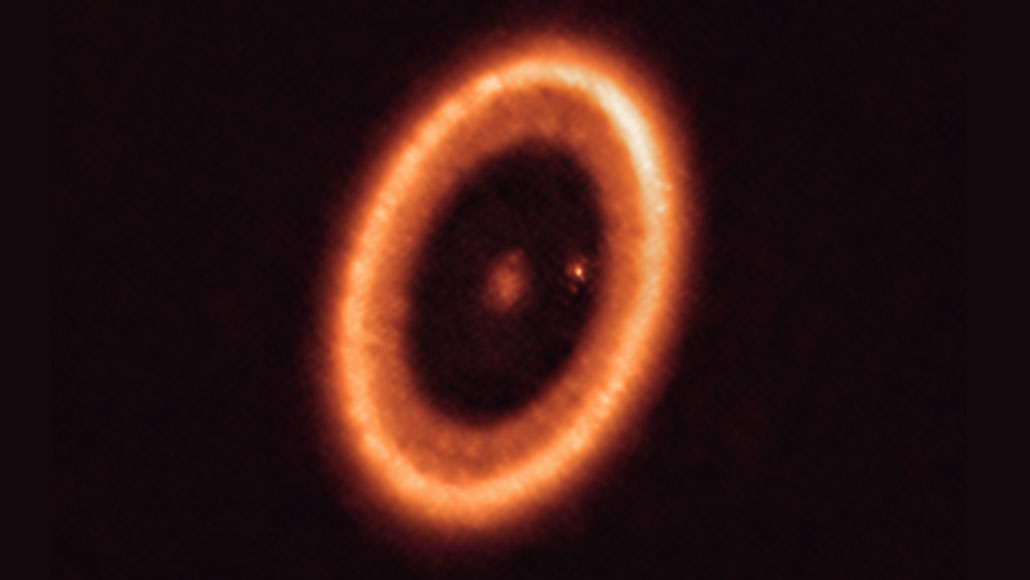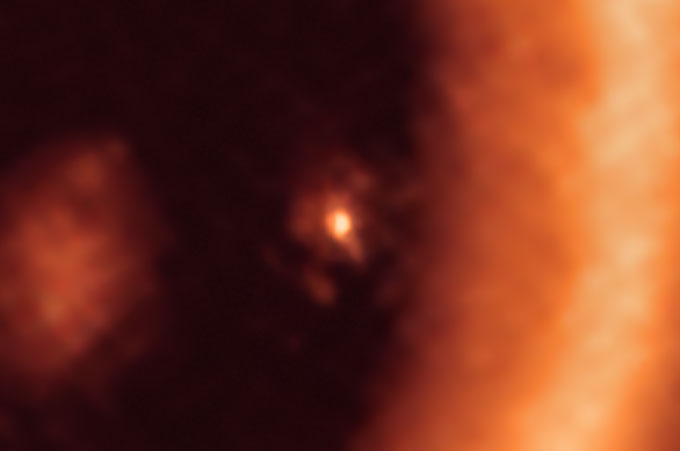
Observations by the ALMA telescope array in Chile show the young star PDS 70 surrounded by a dusty ring of debris. The bright dot just inside that ring is a disk of potentially moon-forming debris surrounding a young planet.
ALMA/ESO, NAOJ and NRAO, M. Benisty et al








